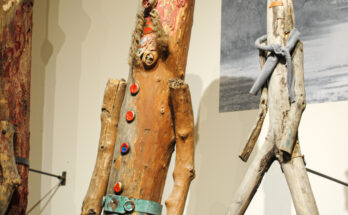Her mother named her “Elizebeth” rather than the more common “Elizabeth” fearing people would refer to her as “Eliza”.
Many of us have read the stories and seen the movies about Bletchley Park, the British code breaking unit which broke the Nazi Enigma codes in WWII. Lesser known is that the U.S. had a similar operation at Arlington Hall in Virginia where the Army had its “Signals Intelligence Unit”.
Both countries also produced some astounding “cryptanalyst” working outside those two locations. Some worked for various government agencies on a variety of important operations. In addition to national defense, they worked in law enforcement and even analyzed Shakespear’s work which some attributed to Sir Francis Bacon. In 1917, Elizebeth Smith met and married William Friedman, a plant biologist who later became a cryptanalyst. Also in 1917, she trained the military’s first code breakers.
Elizebeth was born in Huntington, Indiana, 26 August 1892. At an early age she developed an interest in puzzles – anything complicated which needed solving. She graduated from college with a degree in English Literature but her real interest lay in code breaking. Her varied success in many areas over the years led her to be declared “America’s First Female Cryptanalyst”.
Some of her earliest work supported the Volstead Act during Prohibition. She decoded messages used to convict a number of smugglers. Her work was instrumental in bringing down Al Capone’s liquor ring in New Orleans. In her work against criminals, she developed many of the principles of modern cryptology.
Some of her work with encryption led to the encryption we have today in our emails and cell phones.
During her long career as a code breaker, her employers included the Army, Navy, Coast Guard, Department of the Treasury, and the International Monetary Fund. She testified as an expert witness in 33 cases. In 1931, she was the first woman to be placed in charge of a government code breaking unit. In 1937, she assisted the Canadian government in prosecuting an opium ring. Her decoding, including some messages in a complicated Chinese cypher, led to the arrest and successful prosecution of the criminals.
In WWII, Elizebeth and her assistants decoded messages sent by the Germans and Japanese to South American countries in their efforts to curry support against the allies. Their efforts identified and broke up a Nazi spy ring.
Elizebeth and her husband had both signed secrecy pledges with the U.S. government which prevented them being publically credited with their work. In 1999, eleven years after her death, Elizebeth was inducted into the National Security Agency Hall of Fame. On 11 January, 2021, she was the subject of an episode of “The Codebreakers”, a documentary series titled “American Experience”. There are today a number of biographies as close as your public library. One of the best is “The Woman Who Smashed Codes: A True Story of Love, Spies, and the Unlikely Heroine Who Outwitted Them”, by Jason Fagone.
Elizebeth Friedman died in 1988 and her ashes were spread over the grave of her husband at Arlington National Cemetery.



